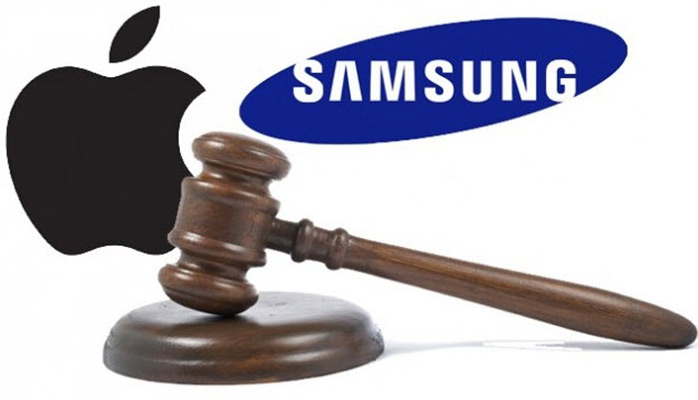Why Apple vs. Samsung Mattered

Full disclosure: I was an expert witness for Samsung in this Apple vs. Samsung case.
In 2011, Apple sued Samsung in US court for patent infringement over design similarities between the iPhone and various Samsung Android phones. This was the opening shot in a series of legal battles fought in multiple countries over three years, costing the two companies nearly a billion dollars. When the dust settled, Apple was largely the winner, the courts finding that Samsung had copied Apple design features.
To the consumer, in the short term, these lawsuits didn’t matter much. Samsung made minor changes in their products and continued to sell phones and tablets. But, behind the scenes, the giants were fighting for position to succeed in the long run, and there were some big issues at stake. Those issues do matter. Let’s take a look at them.
User Interface Matters
Initiating this series of lawsuits was a costly decision for Apple, and not just in terms of legal costs. Apple chose to sue a critical business partner. Samsung was a key Apple supplier of iPhone displays and processors, and Apple’s iPhone business relied on them. Yet the issues involved were important enough that Apple was willing to risk that relationship and threaten iPhone and iPad production. Samsung, potentially facing an injunction that would have preventing them from selling phones, upped the stakes by counter-suing Apple, a major customer. It was serious business–AllThingsD.com called it a “knock-down, drag-out brawl.”
They were brawling at such high stakes over user interface – UI has become that important. Apple structured their infringement claim to protect their UI. Apple’s design patents are written to protect specific design elements and features. Apple had approximately 1,300 patents related to mobile devices, and of these they claimed Samsung infringed on seven:
- touchscreen interactions (patent `381)
- using an API to scroll through documents (patent `915)
- tap-to-zoom (patent `163)
- general outline and ornamental design (patent `677)
- general outline and ornamental design (patent `087)
- ornamental design (patent `889)
- GUI for a display screen (patent `305)
Individually these patents may not seem that important, but collectively they comprised key elements of Apple’s total user experience, which is very valuable to them. In choosing to fight over these specific patents, Apple staked out some of the UI elements that make an iPhone an iPhone.[2]
Further, Apple wasn’t just protecting the iPhone UI; they were protecting important common UI elements across all Apple devices. Customers identify these features with Apple’s design, innovation, ease of use, and quality, and this branding mattered very much to the folks in Cupertino.
Companies will continue to strive to create a total user experience across platforms that gives them an edge in the market. Companies that fail to do so will struggle — Nokia failed to create a compelling total user experience, which certainly contributed to their decline in market share. Two factors increase the stakes here. One factor is the increasing emphasis on design. Good design sells, and arguably helped Apple create the most valuable company on earth. Another factor is the prevalence of applications that work across software platforms and devices. Consider applications like Evernote or Amazon’s Kindle Reader that run on Windows, Apple OS, Android, desktop, and mobile, all with similar functionality and UI. That is a lot of territory to protect.
So expect other companies will go to court over UI issues, and will frame patents (which cover individual features, behaviors, etc.) in a way that protects their total user experience. Development and legal teams will work more closely together to “make use of all available forms of IP [Intellectual Property] protection including design patents, utility patents, copyright, trademark and in litigation, trade dress, to create an interlocking set of protections.”[3]
Mobile Matters
It is also instructive to note that Apple and Samsung fought their battle over mobile devices. Mobile is the growing market. According to Cisco, global mobile data traffic grew 69% in 2014, and in 2014 “mobile data traffic was nearly 30 times the size of the entire global Internet in 2000.” Cisco further predicts that global mobile data traffic will increase nearly 10 times between 2014 and 2019.[4]
Apple realized that territory staked out now becomes more important as mobile increases in importance. Other companies see the same thing. Visua.ly created an infographic showing the patent wars in 2012, the same general time frame as the first Apple/Samsung suit. It depicts a complex web of cooperation and skirmishing as companies such as RIM, Yahoo, Facebook, and Google maneuvered to protect the mobile experiences they had created and to set legal precedence for mobile patents. Expect for this to continue, and for many companies to focus on mobile UI and then port that design to other platforms.
The Ecosystem Matters
In this complex business and technical ecosystem, companies are forced to rely on partners to help bring their products to consumers. Apple relies on suppliers such as Samsung and network providers such as AT&T and Verizon; without them there would be no iPhone. But companies want as much control as they can get; look at Microsoft’s acquisition of Nokia to give them direct control over the hardware running Windows Phone.
Companies with the resources to do so will continue to maneuver to control as much as they can of their ecosystem: the application UI, the operating system, the hardware, and the cellular network. Apple is very good at this, controlling everything except the cellular network.[5]
Companies will also battle strategically for market share. An attack on one party may actually be launched for its effect elsewhere. For example, one way to look at Apple v. Samsung, in addition to Apple addressing their issues with Samsung, is as a battle in a larger proxy war with Google over the Android operating system and ecosystem. By making business life more difficult for Android handset manufacturers, Apple makes life more difficult for Google.
- http://www.mauronewmedia.com/blog/apple-v-samsung-implications-for-product-design-user-interface-ux-design-software-development-and-the-future-of-high-technology-consumer-products/
- http://www.mauronewmedia.com/blog/apple-v-samsung-implications-for-product-design-user-interface-ux-design-software-development-and-the-future-of-high-technology-consumer-products/
- http://www.cisco.com/c/en/us/solutions/collateral/service-provider/visual-networking-index-vni/white_paper_c11-520862.html
- http://allthingsd.com/20120730/as-apple-and-samsung-head-to-court-heres-a-handy-cheat-sheet/
- http://www.mauronewmedia.com/blog/apple-v-samsung-implications-for-product-design-user-interface-ux-design-software-development-and-the-future-of-high-technology-consumer-products/

